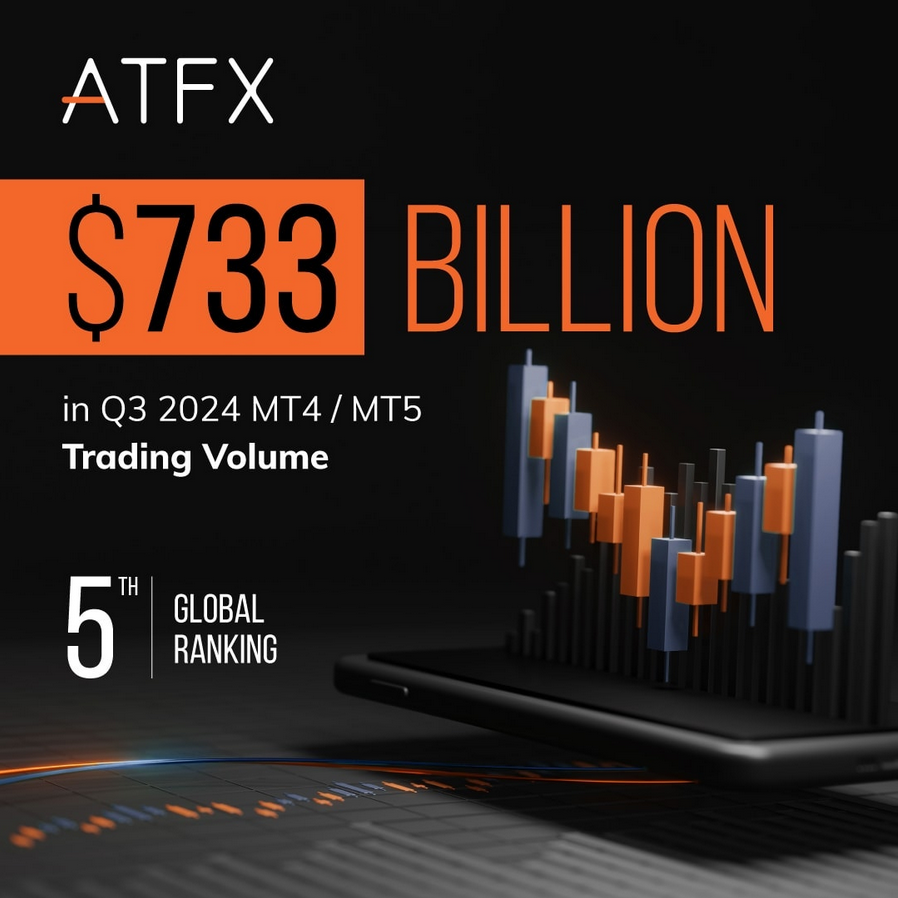Global markets face heightened uncertainty as trade tensions escalate, particularly between the US and China, impacting various asset classes. The euro shows some resilience despite regional economic concerns, while the British pound is pressured by economic risks and potential policy responses. The Japanese yen strengthens as a safe-haven asset amid market jitters. The Australian and New Zealand dollars experience volatility, sensitive to global risk sentiment and potential central bank actions. Gold initially finds some support but faces downward pressure. Oil prices are volatile, influenced by trade disputes and supply considerations.
🇪🇺/🇺🇸 EUR/USD
Market Analysis: The EUR/USD pair has experienced significant volatility, heavily influenced by trade war tensions and the relative economic outlook of the Eurozone and the United States. Recent strength in the euro, pushing it to levels not seen since early October 2024, appears linked to a weaker US dollar and escalating global trade concerns. The anticipation of further monetary easing by the European Central Bank (ECB), with markets pricing in a high probability of a rate cut, is also a key factor. Concerns about the impact of US tariffs on the Eurozone economy are likely contributing to this expectation of looser monetary policy. The NFIB Small Business Optimism Index from the US is being closely watched as an indicator of US economic sentiment.
Key Factors:
- US Trade Tariffs: The imposition and potential escalation of tariffs by the US are creating uncertainty and impacting risk sentiment, which can influence the US dollar’s strength.
- Eurozone Economic Data: Lackluster economic news from the Eurozone is putting downward pressure on the euro and increasing expectations for ECB action.
- ECB Monetary Policy: Expectations of interest rate cuts by the ECB are weighing on the euro’s appeal.
- US Economic Indicators: Data releases like the NFIB Small Business Optimism Index provide insights into the health of the US economy and can affect the dollar.
Support Levels: 1.0879, 1.0805, 1.0785
Resistance Levels: 1.1088, 1.1136, 1.1201
General Forecast: Given the prevailing concerns about trade and the expectation of further ECB easing, the EUR/USD pair faces downward pressure. While short-term rebounds are possible, sustained upward movement may be limited unless there is a significant easing of trade tensions or positive economic surprises from the Eurozone. A break below the support level of 1.0805 could signal a continuation of the downtrend. Conversely, a sustained move above the resistance at 1.1088 might indicate a shift in momentum.
🇬🇧/🇺🇸 GBP/USD
Market Analysis: The GBP/USD pair has seen a sharp decline, falling below the $1.29 level, primarily driven by fears of a global economic slowdown stemming from US tariff policies. Even though the UK faces a lower tariff rate compared to some other economies, concerns about product dumping and reduced competitiveness of British exports are weighing on the pound. Rising domestic inflation fears, partly due to increased employers’ national insurance contributions, are also a factor. These developments suggest a cautious approach to monetary easing by the Bank of England.
Key Factors:
- Global Trade Risks: Concerns that US tariffs will lead to a global recession are negatively impacting risk assets like the British pound.
- UK Economic Outlook: Uncertainty surrounding the impact of global trade tensions on the UK economy is a key concern.
- UK Inflation: Rising inflation fears could influence the Bank of England’s monetary policy stance.
- Bank of England Rhetoric: Speeches and statements from Bank of England officials can significantly impact the pound’s value.
Support Levels: 1.2884, 1.2853, 1.2811
Resistance Levels: 1.2953, 1.3050, 1.3176
General Forecast: The GBP/USD pair is likely to remain under pressure due to the prevailing global economic uncertainty and potential negative impacts on the UK economy. While short-term recoveries are possible, especially after significant sell-offs, the overall trend appears bearish. A break below the support level of 1.2884 could lead to further declines. A sustained move above the resistance at 1.2953 might offer some respite, but the upside potential could be limited by the broader negative sentiment.
🇺🇸/🇯🇵 USD/JPY
Market Analysis: The USD/JPY pair has seen the Japanese yen strengthen significantly, reaching its highest level against the dollar since early October 2024. This move is largely attributed to a “flight to safety” as investors seek less risky assets amid escalating trade war tensions. While the Bank of Japan is expected to continue raising interest rates, uncertainty surrounding global trade and domestic economic conditions is a moderating factor.
Key Factors:
- Safe-Haven Flows: The Japanese yen is benefiting from its safe-haven status during times of global economic uncertainty and risk aversion.
- US Dollar Weakness: Concerns about the impact of US trade policies are contributing to a weaker US dollar.
- Bank of Japan Monetary Policy: Expectations of further interest rate hikes by the Bank of Japan are providing support to the yen.
- Global Economic Outlook: Uncertainty about the global economy is driving demand for safe-haven currencies.
Support Levels: 145.90, 144.22
Resistance Levels: 147.43, 148.41, 149.16, 150.27
General Forecast: The USD/JPY pair is likely to remain biased towards the downside as long as global trade tensions persist and the US dollar remains under pressure. The yen’s safe-haven appeal will likely continue to support its strength. While short-term upward corrections are possible, the overall trend suggests further potential for yen appreciation against the dollar. A break below the support level of 145.90 could accelerate the decline. A sustained move above the resistance at 147.43 might indicate a temporary weakening of the yen’s strength.
🇦🇺/🇺🇸 AUD/USD
Market Analysis: The Australian dollar has experienced significant volatility and a sharp decline, falling below the $0.60 level for the first time since the COVID-19 pandemic lows in March 2020. This plunge is largely due to its status as a risk currency, making it vulnerable to the global equity market sell-off triggered by US tariffs and fears of a global recession. Weakening Australian consumer and business confidence, directly linked to the tariff policies, is also a major factor. The Reserve Bank of Australia (RBA) is now widely expected to cut interest rates, possibly more aggressively than previously anticipated, in response to the economic uncertainty. Australia’s strong trade ties with China make it particularly vulnerable to an escalating US-China trade war.
Key Factors:
- Risk Sentiment: As a risk-sensitive currency, the Australian dollar is heavily impacted by global market sentiment and fears of economic downturns.
- US-China Trade War: Australia’s close economic relationship with China makes it particularly vulnerable to trade tensions between the US and China.
- Australian Economic Confidence: Declining consumer and business confidence is weighing on the Australian dollar.
- RBA Monetary Policy: Expectations of interest rate cuts by the Reserve Bank of Australia are putting downward pressure on the currency.
Support Levels: 0.5907, 0.5775, 0.5903, 0.5821
Resistance Levels: 0.6120, 0.6252, 0.6016, 0.6098
General Forecast: The AUD/USD pair is expected to remain under significant downward pressure due to the ongoing trade tensions and the likelihood of RBA interest rate cuts. Any short-term rebounds are likely to be limited unless there is a significant easing of global trade concerns. A break below the support level of 0.5900 could lead to further substantial declines. While the pair has seen some recovery, sustained upward movement above the 0.6100 level appears challenging in the current environment.
🇳🇿/🇺🇸 NZD/USD
Market Analysis: Similar to the Australian dollar, the New Zealand dollar has experienced a sharp decline due to its risk-sensitive nature and the global market turmoil caused by US tariffs. The Reserve Bank of New Zealand (RBNZ) is widely expected to lower interest rates, possibly more aggressively due to the escalating trade tensions and the risk of a global recession, which would significantly impact New Zealand’s export-reliant economy. The sudden resignation of the RBNZ Governor adds an element of uncertainty. New Zealand’s strong trade links with China also make it vulnerable to the US-China trade conflict.
Key Factors:
- Risk Sentiment: The New Zealand dollar is sensitive to global risk appetite and market volatility.
- US-China Trade War: New Zealand’s trade relationship with China exposes it to the negative consequences of a US-China trade war.
- RBNZ Monetary Policy: Expectations of interest rate cuts by the Reserve Bank of New Zealand are weighing on the currency.
- Domestic Economic Concerns: Weak economic growth and the potential for a global recession are significant concerns for the New Zealand economy.
Support Levels: 0.5484, 0.5426
Resistance Levels: 0.5565, 0.5623, 0.5704
General Forecast: The NZD/USD pair is likely to remain under pressure due to the global trade uncertainty and the anticipated RBNZ interest rate cuts. While short-term rebounds are possible, the overall trend appears bearish. Failure to overcome the resistance level of 0.5595 suggests continued downward momentum. Traders should be cautious ahead of key US economic data releases, which could further impact the US dollar and, consequently, the NZD/USD pair.
🌕 Gold (XAU/USD)
Market Analysis: Gold prices initially saw some support as a safe-haven asset amidst the escalating trade tensions. However, it experienced a significant sell-off as investors liquidated gold holdings to cover losses in other asset classes during the broader market downturn. Rising gold inventories in COMEX warehouses suggest concerns about potential supply disruptions due to tariffs. Despite the recent decline, technical analysis suggests potential for short-term rebounds, although the overall outlook remains uncertain, heavily dependent on the evolution of trade tensions.
Key Factors:
- Safe-Haven Demand: Gold typically benefits from increased demand during times of economic uncertainty and market volatility.
- Market Liquidation: Broad market sell-offs can lead to investors selling gold to cover margin calls and losses in other assets.
- Trade War Impact: Escalating trade tensions and their potential impact on the global economy can influence gold’s safe-haven appeal.
- US Dollar Strength: A stronger US dollar can put downward pressure on gold prices, as it is typically priced in dollars.
Support Levels: 3017, 3000, 2976, 2954, 2930, 2906, 2896, 2859, 2833
Resistance Levels: 3054, 3087, 3136, 3167, 3200
General Forecast: Gold’s price action will likely remain volatile, influenced by the ebb and flow of trade war news and overall market sentiment. While its safe-haven status could provide support during periods of heightened risk aversion, it is also vulnerable to broad market sell-offs and a strengthening US dollar. A break below the support level of $3000 could signal further downside. A sustained move above the $3054 resistance level might indicate renewed bullish momentum.
⚫ Oil (Crude Oil)
Market Analysis: Brent crude oil prices have been volatile, reacting to concerns about US tariffs potentially leading to a global recession, as well as OPEC+ supply decisions. Technical analysis suggests a possibility of a recovery, but the overall outlook is clouded by the uncertainty surrounding global trade. A slowdown in US drilling activity could potentially impact supply if WTI prices remain below a certain level.
Key Factors:
- Global Economic Growth: Concerns about a global recession triggered by trade wars can negatively impact the demand for oil.
- OPEC+ Supply Decisions: Production cuts or increases by OPEC+ and its allies significantly influence oil prices.
- US Drilling Activity: The level of drilling activity in the US can affect global oil supply.
- Geopolitical Factors: Events and tensions in oil-producing regions can lead to price volatility.
Support Levels: (Not explicitly provided in the text, but the analysis mentions a potential weakening to 55.34 and 50.71)
Resistance Levels: (The analysis mentions a potential strengthening correction to 67.07, with a key level at 72.26)
General Forecast: Oil prices are expected to remain volatile, influenced by the ongoing trade tensions and their potential impact on global demand. Supply-side factors, including OPEC+ decisions and US production, will also play a crucial role. A sustained break below the $60 level could signal further downside, while a move above $70 might indicate a recovery in prices. Traders should closely monitor news related to trade and supply for directional cues.









